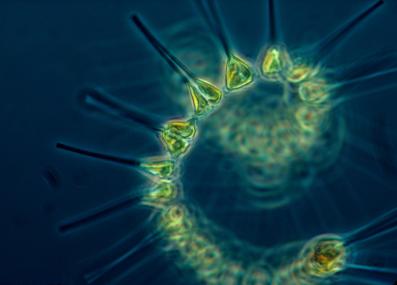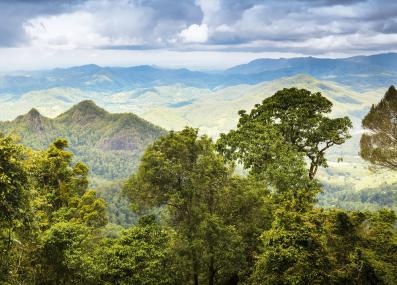Have a question?
How will future warming and CO2 emissions affect oxygen concentrations?
Oxygen levels are declining due to the burning of fossil fuels and other kinds of pollution. While the decline won’t directly affect humans in terms of the air we breathe, certain ecosystems are much more impacted, especially aquatic ones.
April 6, 2022
Humans and virtually all animal life on Earth require oxygen to breathe. (Yes, even fish breathe oxygen.) Scientists around the world have found that the concentration of oxygen in our water and air is actually declining, says Prof. Andrew Babbin, an oceanographer and professor of chemical oceanography and marine microbiology at MIT Department of Earth, Atmospheric and Planetary Sciences (EAPS).
Why? The biggest culprit is the burning of fossil fuels.
First, let’s talk about the oxygen that’s in our air, which we and other animals breathe every day.
When we burn fossil fuels, carbon (C) combines with oxygen molecules (O2) to make carbon dioxide (CO2), which is a greenhouse gas that is the main contributor to climate change. This process traps the oxygen molecules that are in our air into the CO2–which means there’s less oxygen for life to breathe. This sounds worrisome, but it isn’t terribly concerning for most scientists, Babbin says. Oxygen makes up about 20% of the atmosphere, and even with all our carbon emissions, total atmospheric oxygen levels have only dropped “a very tiny fraction,” he says.
In our ocean, it’s a different story. The ocean stabilizes the atmosphere in two important ways—it contains plankton and bacteria that produce somewhere between 50 to 80% of the world’s oxygen,1 and its water absorbs massive amounts of carbon—about one-third of the amount humans have put into the air since the Industrial Age2—reducing the impact of fossil fuel combustion. As the planet gets hotter due to increased CO2 concentrations, oceans are also warming up. As liquids warm, they can’t hold as much dissolved gas. This means a warmer ocean can’t hold as much carbon or dissolved oxygen, which marine life relies on for survival.
While this effect has been most heavily studied in oceans, creatures living in other aquatic environments will also feel the impacts, Babbin added. “Whether it's in seawater or waterlogged soils or in a pond, oxygen found in an aqueous system is going to be much more reduced” as the planet warms, he says.
Global warming and greenhouse gas emissions aren’t the only factors driving ocean deoxygenation. Fertilizer runoff and sewage pollution deposit enormous amounts of nitrogen and other nutrients into coastal waters, which create watery feasts for fast-growing algae. Algal blooms block overhead sunlight and consume dissolved oxygen very quickly, killing marine life in the process. Some blooms also release toxins into the water. Problems even continue after the algae is dead: when an algal bloom dies, that organic material decomposes, attracting bacteria that also deplete oxygen supplies. Scientists call this process “eutrophication,” and in places like the Gulf of Mexico, Florida’s coasts, and Lake Erie, eutrophication events regularly create dead zones where aquatic life cannot survive because there simply isn’t enough oxygen.
How serious is all this? Recent models estimate a decline of global oxygen concentrations in the ocean to be between 1% and 7% by the year 2100.3 This can lead to serious ecosystem impacts, including reducing biodiversity, disrupting fishery resources, and increasing algal blooms.
The best possible chance we have for curbing deoxygenation is to reduce our use of fossil fuels, says Babbin. On the flip side, there are some hopeful strategies for re-oxygenating oceans and coastal waters that include leveraging plants that produce oxygen through photosynthesis. “This is where things like kelp forests, oyster farming, or any of these other aquacultures can help in some way,” he says. Reducing toxins that go into our water systems can allow these plants to thrive, he adds, and can prevent eutrophic events that further decimate oxygen supplies.
Thank you to Victor Oliveira of Barbacena, Brazil for the question. You can submit your own question to Ask MIT Climate here.
1 National Ocean Service: How much oxygen comes from the ocean? Accessed April 6, 2022.
2 S. Khatiwala et al. "Global ocean storage of anthropogenic carbon." Biogeosciences, 10, 2169–2191, 2013. doi:10.5194/bg-10-2169-2013
3 Schmidtko, Sunke, Lothar Stramma & Martin Visbeck. "Decline in global oceanic oxygen content during the past five decades." Nature, vol. 542, February 2017. doi:10.1038/nature21399








